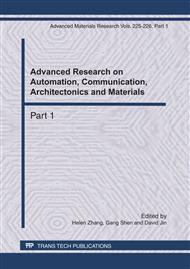p.878
p.882
p.886
p.890
p.895
p.903
p.907
p.911
p.917
Blind Single-Image Super-Resolution Reconstruction Based on Motion Blur
Abstract:
Blind image super-resolution reconstruction is one of the hot and difficult problem in image processing. a framework of blind single-image super-resolution reconstruction algorithm is proposed. In the low-resolution imaging model, the processes of motion blur, down-sampling, and noise are considered. The parameter of motion blur is estimated through an error-parameter analysis method. Utilizing Wiener filtering image restoration algorithm, an error-parameter curve at different motion distance is generated, from which the motion distance of the motion point spread function (PSF) can be estimated approximately. The super-resolution image is reconstructed through the iterative back projection (IBP) algorithm. The experimental results show that motion PSF estimation plays an important role on the quality of the SR reconstructed image, and also demonstrate the effectiveness of the proposed algorithm.
Info:
Periodical:
Pages:
895-899
Citation:
Online since:
April 2011
Authors:
Price:
Сopyright:
© 2011 Trans Tech Publications Ltd. All Rights Reserved
Share:
Citation:


